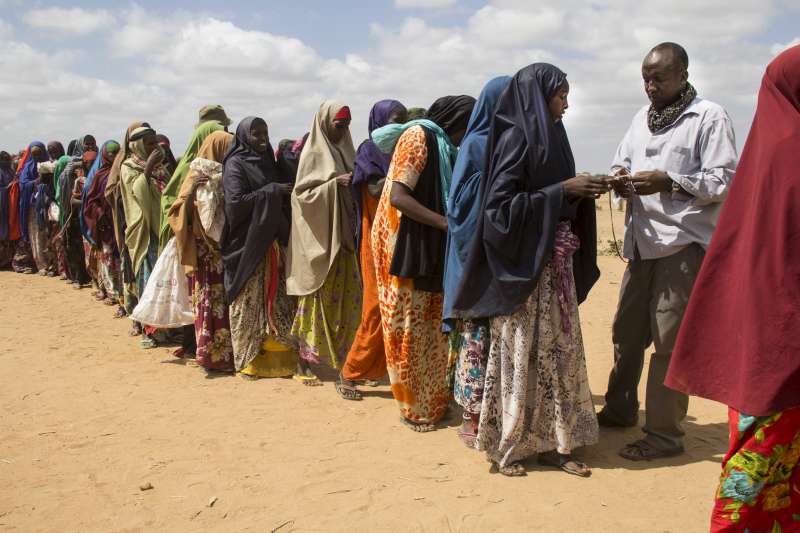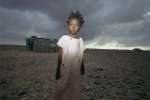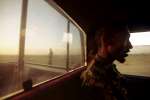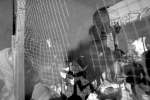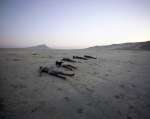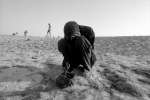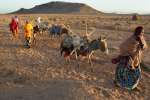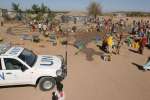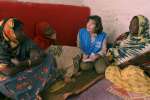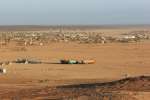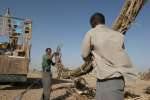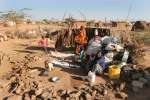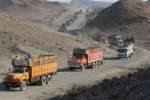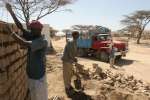UNHCR urges continued international protection for asylum-seekers from Somalia
News Stories, 28 January 2014
GENEVA, January 28 (UNHCR) – The UN refugee agency on Tuesday announced that it has released updated guidelines on the international protection needs of people fleeing southern and central Somalia that underscore the need for governments to assess applications for protection on the basis of reliable, up-to-date information about the situation in Mogadishu and other areas.
"Notice needs to be taken of the impact of the armed conflict on civilians," stressed UNHCR spokesperson, Fatoumata Lejeune-Kaba , in Geneva, who said that while security has improved in some parts of southern and central Somalia, armed conflict and human rights abuses continue to compel Somalis to leave their country. More than 42,000 Somalis sought asylum in neighbouring countries and elsewhere in 2013.
"We are appealing to all states to uphold their international obligations with regard to no forced returns, or non-refoulement. Somali nationals should not be forcibly returned to Somalia unless the returning state is convinced that the persons involved would not be at risk of persecution," Lejeune-Kaba told journalists.
Southern and central Somalia remain dangerous places. While there are no complete statistics on conflict-related casualties, data compiled by ACLED, a research group, shows there were more casualties in 2012 and early 2013 than in 2011. Monthly fatalities fluctuated between 100 and 600 people. In June 2013, fierce fighting resulted in 314 casualties in Kismayo alone.
Civilians are at risk of being killed or wounded in crossfire between government forces and Al-Shabaab militants as well as by bomb attacks and as bystanders in targeted attacks. Even in the Somali capital of Mogadishu, nominally under government control with the backing of the African Union Mission in Somalia, Al-Shabaab has repeatedly demonstrated its ability to stage deadly attacks.
As a result of the continuing fighting and human rights abuses, thousands of civilians continue to be displaced both within and outside of Somalia. More than 57,800 people were newly displaced in southern and central Somalia between January and September 2013.
As of last October, the number of internally displaced people (IDPs) in this part of Somalia was estimated at 893,000 out of a total of 1.1 million IDPs countrywide. Displaced women are particularly vulnerable – with consistent reports of widespread rape and perpetrators remaining unpunished.
Between January and November last year, almost 21,520 Somalis sought asylum in neighbouring countries. In addition, Somalis filed 20,600 asylum claims in 44 industrialized countries in 2013, compared to some 18,700 claims in 2012. While more than 33,000 spontaneous returns were recorded between January and November last year, many may not have been permanent. As of end 2012, the number of Somali refugees worldwide was 1.136 million.
UNHCR's new guidelines on the international protection needs of people fleeing southern and central Somalia include a number of risk profiles. Applications by Somali asylum-seekers with such profiles require especially careful examination.
"We consider the options for Somalis to find protection from persecution or serious harm within southern and central Somalia to be limited. This is especially true for large areas that remain under the control of Al-Shabaab and its allies. At the same time, in Mogadishu, protection to people at risk of persecution at the hands of Al-Shabaab is also generally not available.
The new guidelines are available at http://www.refworld.org/docid/52d7fc5f4.html




